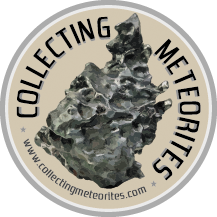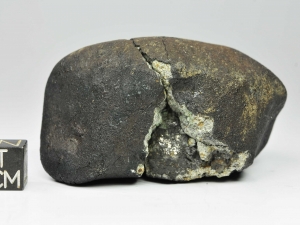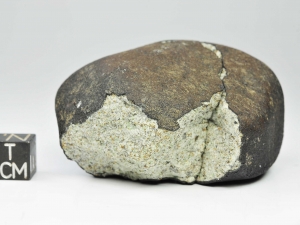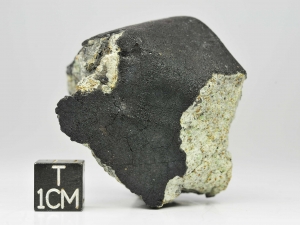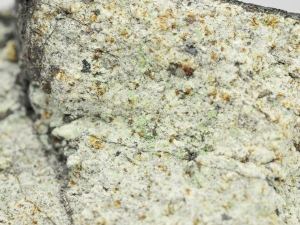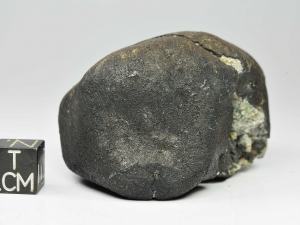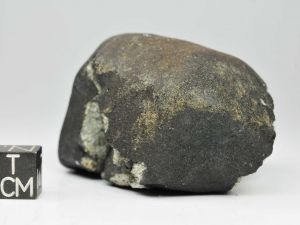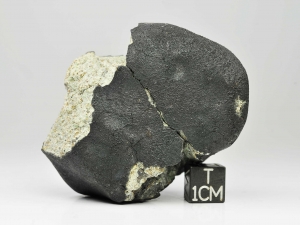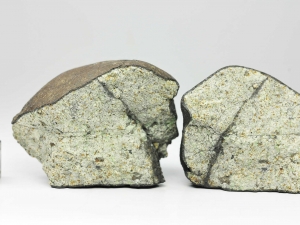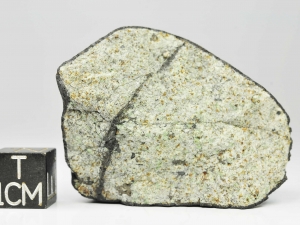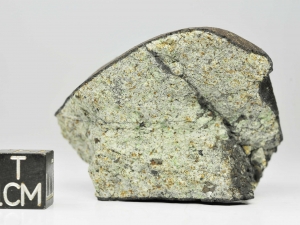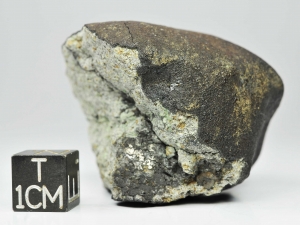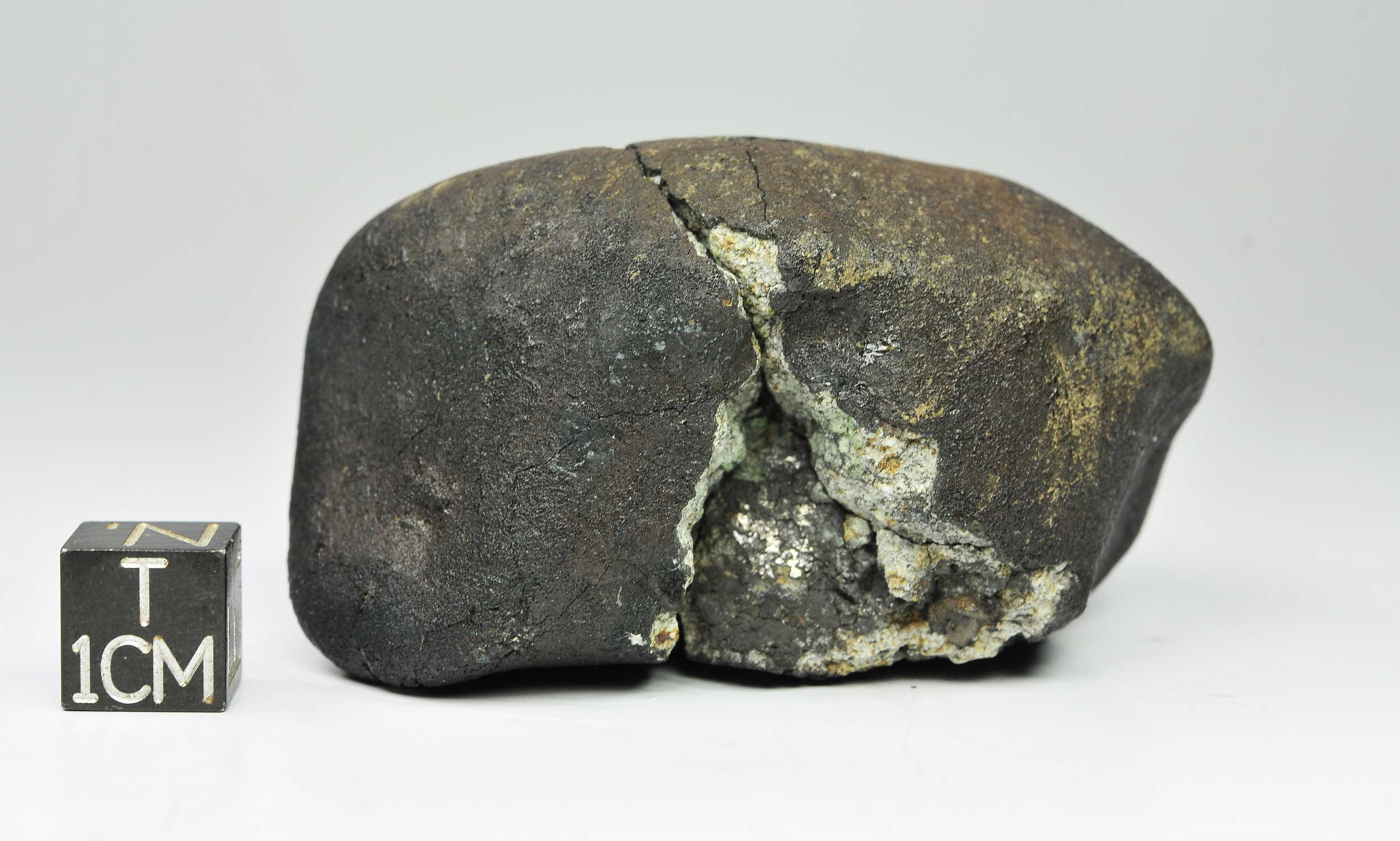
| Ask for price |
Basic information:
Name: Katol
This is an OFFICIAL meteorite name.
Abbreviation: There is no official abbreviation for this meteorite.
Observed fall: Yes
Year fell: 2012
Country: India
Mass: 13 kg
Classification history:
Recommended: L6 [explanation]
Writeup from MB 102:
Katol 21° 15′ 50″N, 78° 35′ 29″E
Maharashtra, India
Fell: 2012
Classification: Ordinary chondrite (L6)
History: On May 22, 2012, at 14:10 local time, a large meteor shower occurred over the town of Katol in the Nagpur District of India. The visual event was followed by 30 to 50 s of sonic booms. At least 30 stones were recovered by GSI in an ellipse centered around 21°15.837’N and 78°35.485’E. The fall was described by Mahajan and Murty (2012).
Physical characteristics: The largest stone is around 1 kg. Crust ranges from glossy (in stones that have little attraction to a magnet) to black and dull. In addition to the stones, at least five iron-rich objects were collected, the largest being a 7 × 5 × 2 cm, 136 g oriented shield. Total recovered mass is in excess of 13 kg. Interior of the fresh stones is medium grained with a sugary texture, and mottled whitish gray with distinct, scattered, light apple-green crystals to 1 mm. Black chromite to 1 mm. Thin shock veins common. One slice shows a thick several mm-thick, straight shock vein. Scattered clusters (to 200 μm) of transparent, honey-brown Ca-Cl phosphates visible in the fresh stones. On contact with water, the stones rapidly (within minutes) become orange stained.
Petrography: Sections and polished mounts were made from four separate stones. Slices of Katol are brittle. The meteorite is highly recrystallized and contains rare BO and PO chondrules (200 to 700 μm) that are well integrated into the matrix. Silicates contain abundant micrometer-sized metal and troilite blebs. Poikilitic texture with large (to 2 mm) low-Ca pyroxene oikocrysts containing rounded olivine chadacrysts. Olivine (to 1 mm) exhibits planar fractures and most grains show weak mosaicism, though rare grains show strong mosaicism. Plagioclase is free of cracks, >50 μm common, largest area 500 × 150 μm. Troilite is single crystal and lacks shock lamellae. Kamacite grains commonly exhibit holy-leaf-shaped outlines. These grains range from polycrystalline (crystals ~10 μm) to single crystals with poorly developed Neumann bands. There are large variations in metal and troilite content among stones, ranging from ~8 vol% metal and 5.5 vol% sulfide up iron-rich specimens with only minor silicates. Chromite, with sizes to ~1 mm, are extensively fractured. Well-developed taenite-plessite fields with dark-etch plessite is common. Metallic Cu common at the kamacite/troilite interfaces. Shock stage variable with evidence of S5 (strong mosaicism in a few olivine grains), but overall most silicates show undulatory extinction indicative of S2.
Geochemistry: (L. Garvie, ASU; G. Parthasarathy, CSIR-NGRI; K. Ziegler, UNM) EMPA for four separate stones gave the following: Stone 1 – Fa23.6±0.4, FeO/MnO=46.6±2.8, n=7; Fs19.9±0.2Wo3.3±0.7, FeO/MnO=28.8±1.2, n=6; An14.8±4.3Ab81.8±3.1Or4.0±1.2, n=5; chromite Fe#=83.3, Cr#=88.4. Stone 2 – Fa24.6±0.3, FeO/MnO=48.3±2.7, n=10; Fs20.5±0.4Wo1.9±0.2, FeO/MnO=28.0±1.7, n=6. Stone 3 – Fa24.8±0.5, n=12; Fs23.3±0.8Wo1.2, n=6. Stone 4 – Fa26.4±0.5, Fs24.0±0.7Wo1.2, n=6. Oxygen isotope values on acid-washed non-magnetic material: δ17O = 3.549, 3.596; δ18O = 4.961, 4.867; Δ17O = 0.930, 1.026 per mil. Bulk whole rock chemical analysis by XRF (mean of stones 3 and 4) Si 16.0, Fe 23.0, Mg 14.4, Al 1.5, Ca 1.64, Ni 1.34, Mn 0.18, Na 0.47, K 0.08, P 0.13, Ti 0.08, Cr 0.36, and S 2.04 (all wt%).
Classification: Ordinary chondrite, L6, W0.
Specimens: 64 g at ASU.
Bibliography: Mahajan R.R. and Murty S.V.S. (2012) Katol meteorite shower. PLANEX Newsletter: Planet. Sci. Expl. Prog. 2, 16-19
Data from MB102, Table 0, Line 0:
State/Prov/County: Maharashtra
Date: 22 May 2012
Latitude: 21°15.837’N
Longitude: 78°35.485’E
Mass (g): 13000
Pieces: 30
Class: L6
Shock stage: S2
Weathering grade: W0
Fayalite (mol%): 24.9±0.4 (n=34)
Ferrosilite (mol%): 21.9±0.5 (n=24)
Wollastonite (mol%): 1.8
Classifier: L. Garvie, ASU; G. Parthasarathy, CSIR-NGRI; K. Ziegler, UNM
Type spec mass (g): 64
Type spec location: ASU
Main mass: GSI
Comments: Submitted by L Garvie
